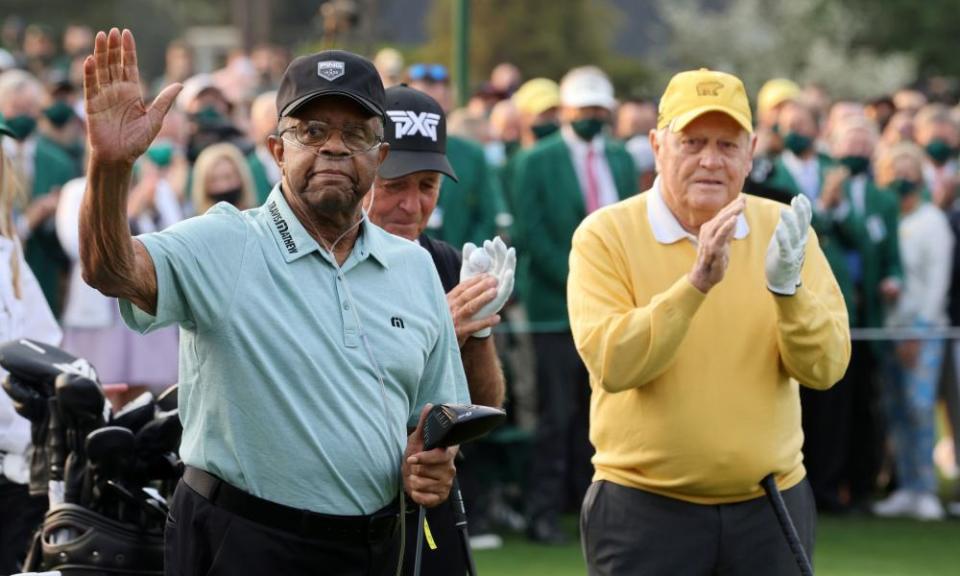Lee Elder, golfer who broke colour barrier at the Masters, dies at age of 87

Elder became first black player to compete at Augusta
Death confirmed by PGA Tour on Monday
Lee Elder, the pioneering golfer who broke several of the sport’s colour barriers, has died at the age of 87.
The PGA Tour confirmed Elder’s death on Monday. The most notable moment of his career occurred in 1975 when he became the first black golfer to play at the Masters, a tournament many saw as an embodiment of the racism and privilege that was a large part of the sport in America at the time. This year his contribution to the Masters was acknowledged when he joined Jack Nicklaus and and Gary Player as an honorary starter at the tournament.
Related: Augusta should not have taken 50 years to honour the pioneering Lee Elder | Andy Bull
In 2015, Elder told CNN that playing at the Masters for the first time was intimidating, particularly after he received death threats leading up to the tournament. One warned him that “he ought to check behind every tree” as he completed his round.
“It was frightening. You try to eliminate the possibility of anything happening,” he said. “That was part of the reason for renting two houses during the Masters week. The logic behind that was the fact we did not want the people to know where I was staying.”
Lee Elder has passed away at the age of 87.
In 1975, he made history as the first African American to compete in the Masters Tournament.
Lee was honored this past April at Augusta National and his legacy will surely live on. pic.twitter.com/1o05rephKt— PGA TOUR (@PGATOUR) November 29, 2021
Elder faced other problems as he established himself as a golfer in the 1960s and 70s. At one tournament he was forced to change in the parking lot after he was refused entry to the clubhouse. At another, a spectator threw his ball into the rough.
Elder first enountered golf working as a caddie but did not play an 18-hole round until he was 16. Early in his career he made money by hustling white golfers who could not believe a black player had the necessary skills to compete. “I once shot 38 playing on one leg. Another time I shot 41 playing on my knees,” he recalled later. He refined his skills during his military service and joined the United Golf Association, a tour for black golfers, upon his discharge. He went on to win four tournaments on the PGA Tour but getting there was a battle in itself: the PGA billed itself as a “Caucasian-only” organisation until 1961.
Elder had soon proven himself good enough to become known outside America, and in 1979 he became the first black player to represent the US at the Ryder Cup.

 Yahoo Finance
Yahoo Finance 